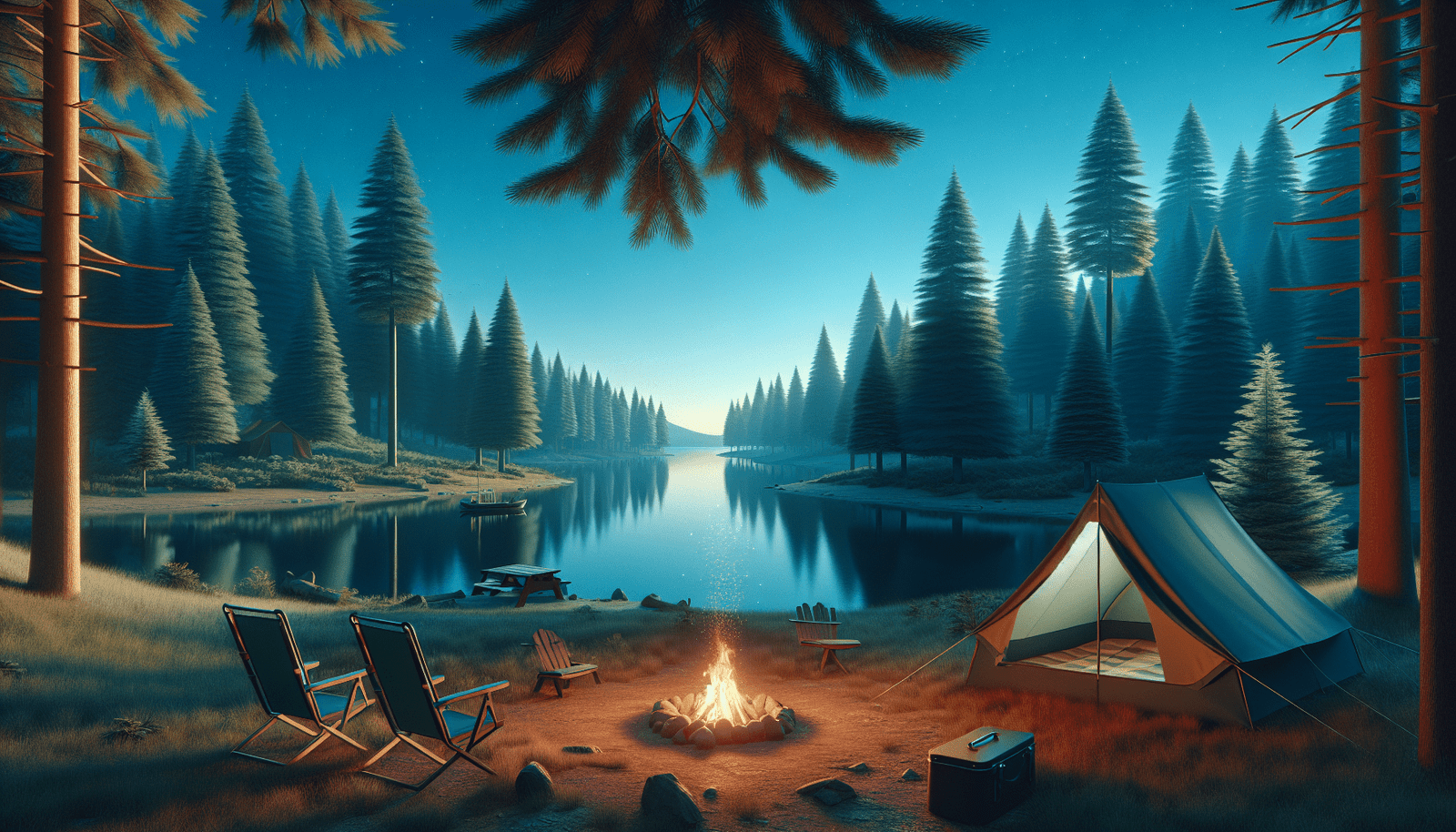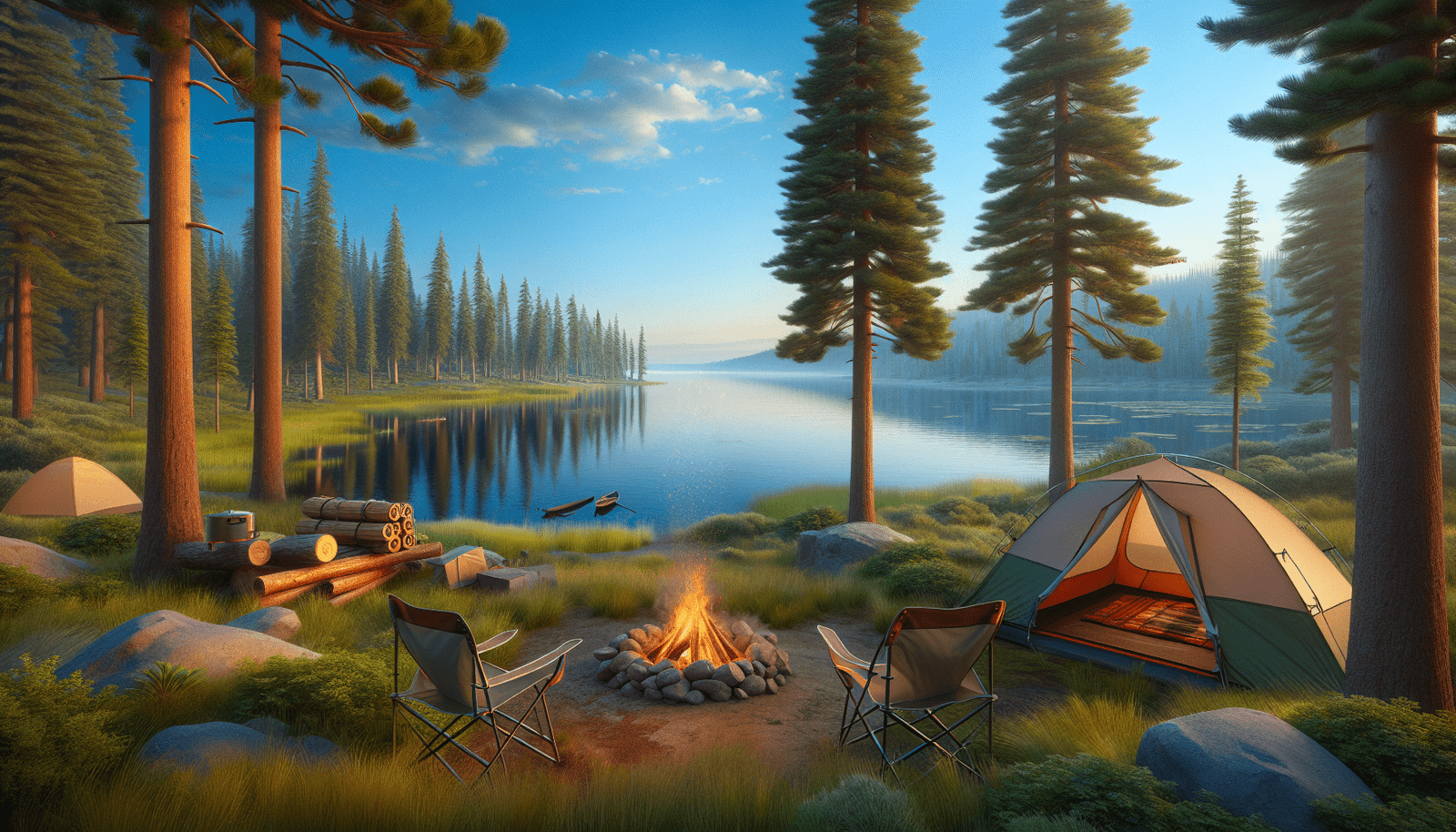Hey there, fellow adventurer! When picking a campsite, you’ve got to think about more than just the scenic view. It’s all about finding that perfect spot that’ll keep you cozy, safe, and equipped for whatever Mother Nature throws your way. Look for level ground to pitch your tent, a spot that’s not too close to water (but not too far either) to avoid floods and mosquitoes, and make sure you’re aware of the wind direction. Plus, a bit of shade can go a long way in keeping you cool during those sunny afternoons. Happy camping, and may your nights be starry and bright!
When Picking a Campsite
Have you ever found yourself overwhelmed when choosing the perfect campsite for your next adventure? If so, you’re not alone. Picking a campsite can feel like a daunting task, given the wide range of choices and factors to consider. However, with a bit of planning and a clear understanding of what to look for, you can ensure a safe, enjoyable, and memorable camping experience.
Choosing a campsite involves more than just finding a spot to pitch your tent. It’s about ensuring your comfort, safety, and maximizing the enjoyment of your surroundings. Whether you’re a seasoned camper or a newbie, this guide will provide you with the essential information and tips you need to pick the ideal campsite.
Understanding Your Camping Style
Before you begin your search for the perfect campsite, it’s important to understand your camping style. Your preferences and habits will shape the kind of campsite that will work best for you.
Car Camping vs. Backpacking
Are you planning to drive to your campsite and have access to your vehicle throughout the trip (car camping), or are you hiking to a more remote location (backpacking)? Car camping allows for more gear and comforts, while backpacking requires a more minimalist approach.
| Factor | Car Camping | Backpacking |
|---|---|---|
| Gear | More gear, more comfort | Limited gear, lightweight |
| Accessibility | Easy access, close to amenities | Remote, situational amenities |
| Experience | Suitable for beginners and families | Requires experience and preparation |
Length of Stay
Consider how long you plan to stay. Different campsites have varying rules and limits on the duration you can camp. A short weekend trip might not require as much planning as a week-long adventure would.
Group Size and Composition
Are you camping alone, with a partner, or with a group? This will determine the amount of space you’ll need and the kind of facilities that might be necessary, especially if you’re bringing children or pets.
Location Considerations
Once you’ve identified your camping style, it’s time to narrow down the location. The location of your campsite will significantly affect your overall experience.
Proximity to Water
Water is essential for drinking, cooking, and cleaning. Campsites near water sources like lakes, rivers, or streams can be very convenient.
Privacy and Seclusion
Do you prefer a secluded spot where you won’t be disturbed, or do you enjoy being in a more social camping environment? Campsites vary in terms of privacy.
Wildlife
Consider the type of wildlife in the area. Some regions have significant animal activity, which can be both a wonderful and risky aspect of your camping experience.
Elevation and Terrain
The elevation and terrain of a campsite can affect the temperature and weather conditions. Higher elevations can be cooler, while valleys might be more prone to dampness or flooding.

Facilities and Amenities
Different campsites offer varying levels of facilities and amenities. Some are primitive with no facilities, while others are fully equipped with modern conveniences.
Basic Amenities to Look For
Here are some basic amenities to consider when picking a campsite:
- Restrooms: Are there flush toilets, pit toilets, or no facilities at all?
- Water Supply: Is there potable water available, or do you need to bring your own?
- Fire Pits/Grills: Are there designated areas for fires, and are they allowed?
- Trash Disposal: Are there trash cans, or do you need to pack everything out?
Additional Features
Some campsites offer additional features that can enhance your camping experience:
- Picnic Tables: Great for meal prep and dining.
- Shade Structures: Provide relief from the sun.
- Showers: A nice perk for longer stays.
- Electric Hookups: Essential for RV camping.
Environmental Impact and Leave No Trace Principles
Respecting nature and minimizing your environmental impact is crucial when camping. The Leave No Trace principles offer guidelines to ensure you’re being responsible and considerate of the environment.
Leave No Trace Principles
- Plan Ahead and Prepare: Research the area and understand the rules and regulations.
- Travel and Camp on Durable Surfaces: Stick to established trails and campsites.
- Dispose of Waste Properly: Pack out all trash, leftover food, and litter.
- Leave What You Find: Preserve the natural environment by not taking souvenirs.
- Minimize Campfire Impact: Use established fire rings and keep fires small.
- Respect Wildlife: Observe from a distance and never feed animals.
- Be Considerate of Other Visitors: Maintain noise levels and respect other campers’ space.

Safety Considerations
Safety should always be a top priority when picking a campsite. Here are some key factors to keep in mind.
Weather
Check the weather forecast before you go. Extreme weather conditions can not only ruin your trip but also pose serious safety risks.
Terrain and Ground Conditions
Inspect the ground for hazards like sharp rocks, roots, and uneven surfaces. Ensure your tent site is level and free from potential hazards.
Emergency Access
Know the nearest location for emergency services and have a plan in case of an emergency. Familiarize yourself with the route to the nearest hospital or ranger station.
Final Pre-Check: What to Evaluate Before Setting Up
Before you start unloading and setting up your gear, take a final walk around the site. Here’s a quick checklist of what to look for.
Site Cleanliness
A clean site is a good indicator that previous campers have respected the area. It also means less work for you in setting up.
Proximity to Other Campsites
Evaluate how close other campsites are. This will affect your privacy and noise levels.
Sun and Shade
Consider the sun’s path and how it will affect your camping experience. Morning sun can help dry dew quickly, while afternoon shade can keep the area cooler.
Wind Protection
Check for natural barriers like trees or rocks that can offer protection from the wind. This can make a huge difference in your comfort level.
Conclusion
Choosing the perfect campsite doesn’t have to be overwhelming. By considering your camping style, desired location, needed facilities, environmental impact, and safety, you can make an informed decision that ensures a rewarding camping experience. Remember, the best campsite is one that meets your specific needs and preferences while respecting the natural surroundings. Happy camping!
